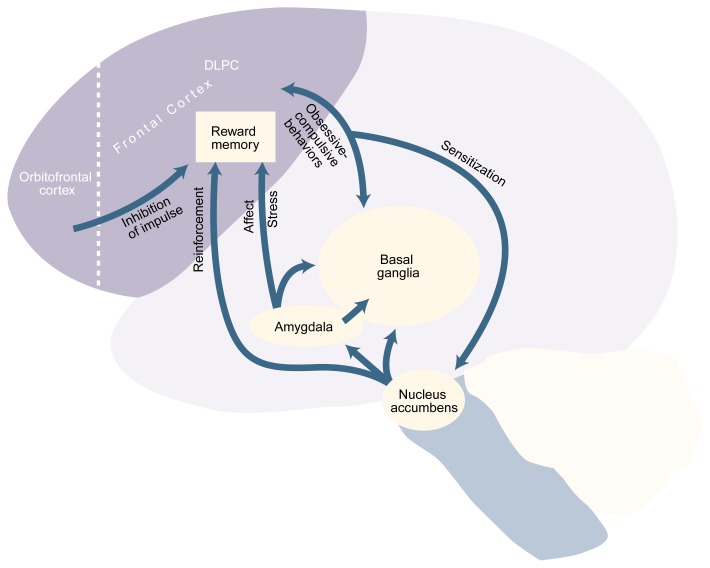Figure 2.
Brain regions involved in craving. Alcohol activates the nucleus accumbens, the brain’s “reward center.” Nerve cells (i.e., neurons) in the nucleus accumbens send information to the amygdala, which plays a role in the modulation of stress and emotions; the frontal cortex (shaded area), including the dorsal lateral prefrontal cortex (DLPC), where the reward memory is thought to be located; and the basal ganglia, which plays a role in repetitive thought and behavior patterns. Neurons located in the amygdala also send information to the DLPC and the basal ganglia. The DLPC sends information back to the basal ganglia (a connection that may play a role in obsessive-compulsive behaviors) and to the nucleus accumbens. Feedback from the DLPC to the nucleus accumbens may sensitize the latter to further alcohol exposure. The DLPC itself is controlled by the orbitofrontal cortex, which induces impulse control.

